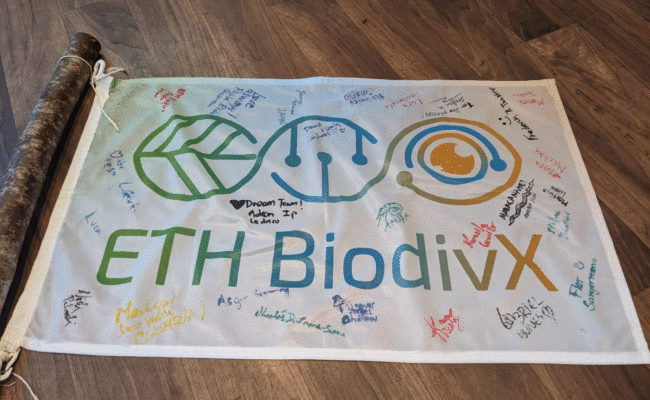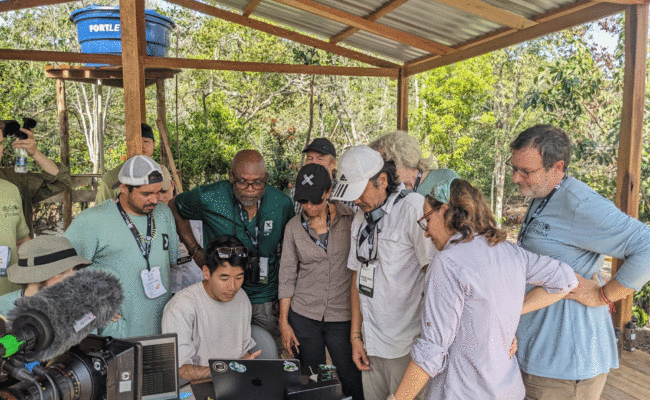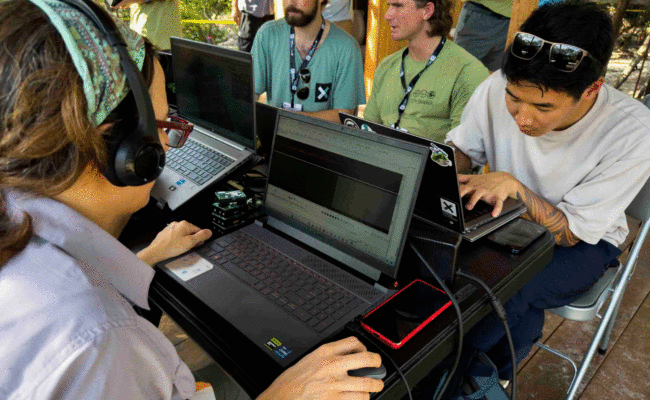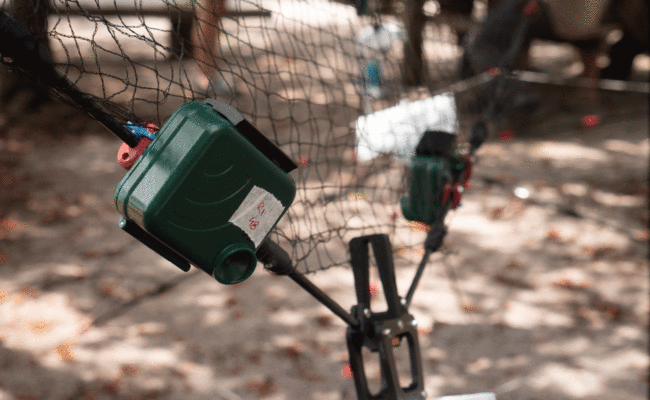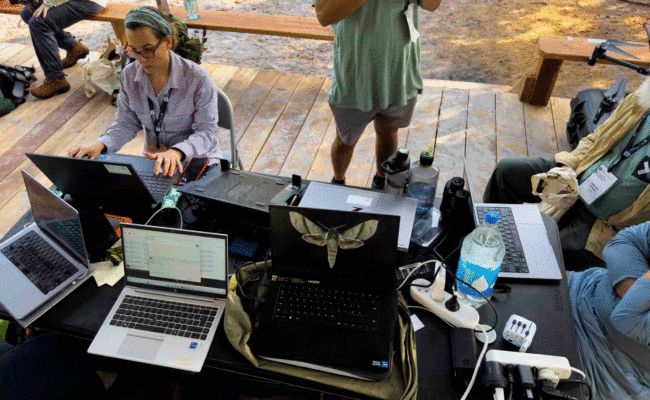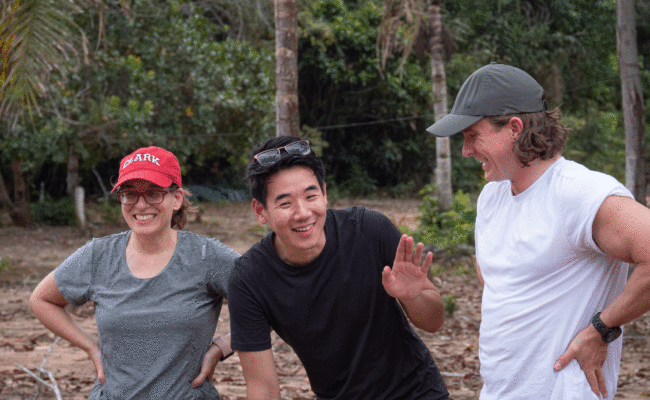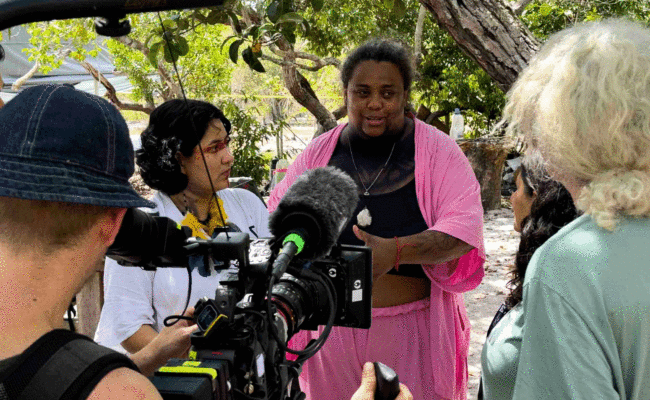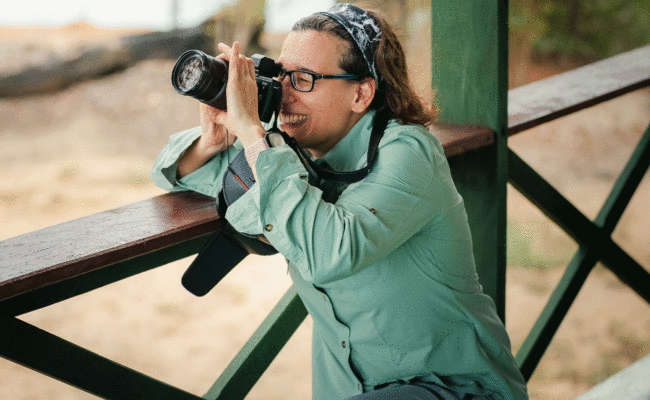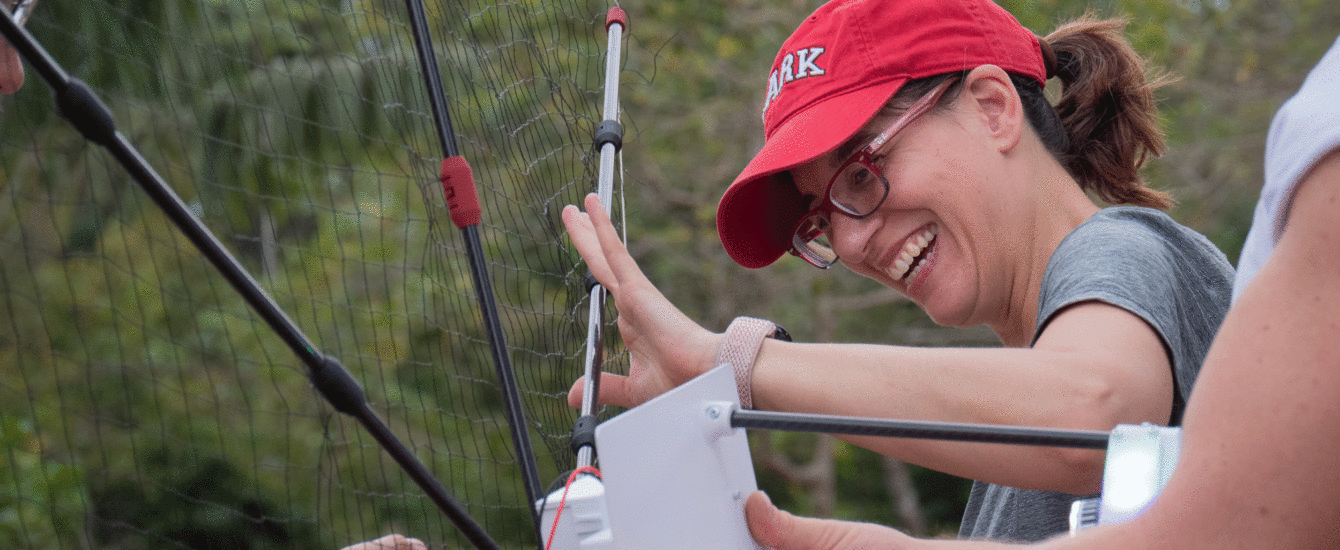
72 hours in the Amazon
Clark Geography Professor Florencia Sangermano and fellow researchers from 14 countries had a simple mission this summer: to determine how many species live in a 38.6-square-mile section of the Amazon rainforest by remotely collecting environmental DNA, wildlife sounds, and images — all within 24 hours — and then 48 hours more to identify species and write a scientific report.
Their goal: to win the five-year, $10 million XPRIZE Rainforest competition, which has challenged scientists from all over the world to use technologically advanced techniques to rapidly survey the tropical forest’s biodiversity and better understand its ecosystem.
Sangermano was part of Zurich, Switzerland-based ETH BiodivX (Eidgenössische Technische Hochschule Zürich), one of six finalist teams that advanced from the semifinals in Singapore last year. Judges will announce the winners in November.
With little sleep and a lot of coffee, Sangermano and 25 of her teammates worked mostly around the clock July 11-13 in Brazil while the rest of the group helped from afar.
To deploy equipment and collect data from the research area, team ETH BiodivX relied on drones attached to spider web-like “rafts” built from netting and ultralight carbon fiber poles (above, Sangermano prepares a raft).
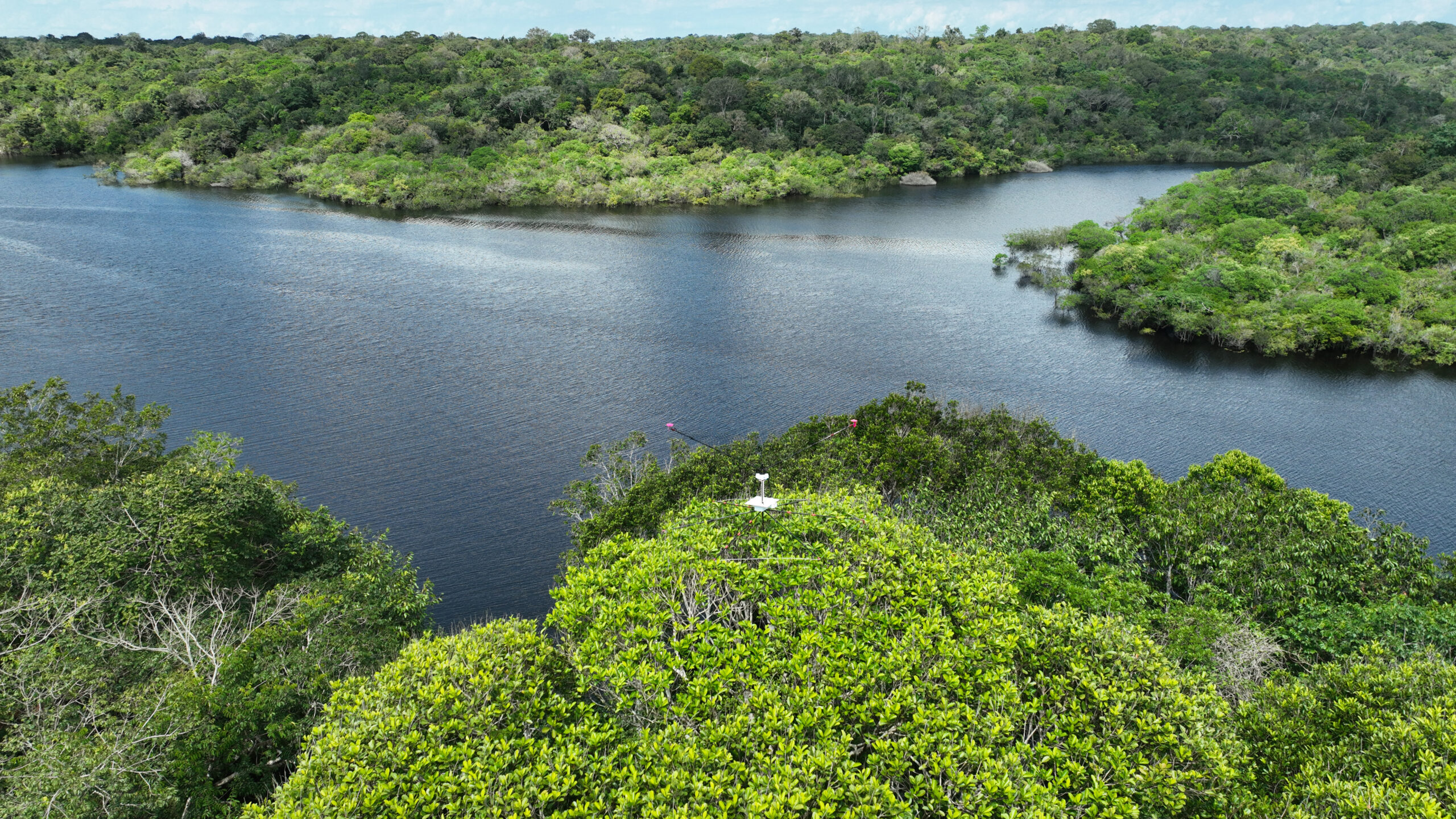
“Deploying sensors in the forest makes the area more accessible and easier to sample,” Sangermano said. “If you walked 300, 500, or 1,000 meters into the forest, it would take a long time. The forest is very dense, and there are a lot of risks from animals and other dangers.”
Before the finals started, XPRIZE provided only one clue: that the research site was located somewhere in 600,000-square-mile Amazonas, the largest state in Brazil. The team visited Brazil in April to test their equipment and meet with local communities to demonstrate the technology and involve them in data collection.
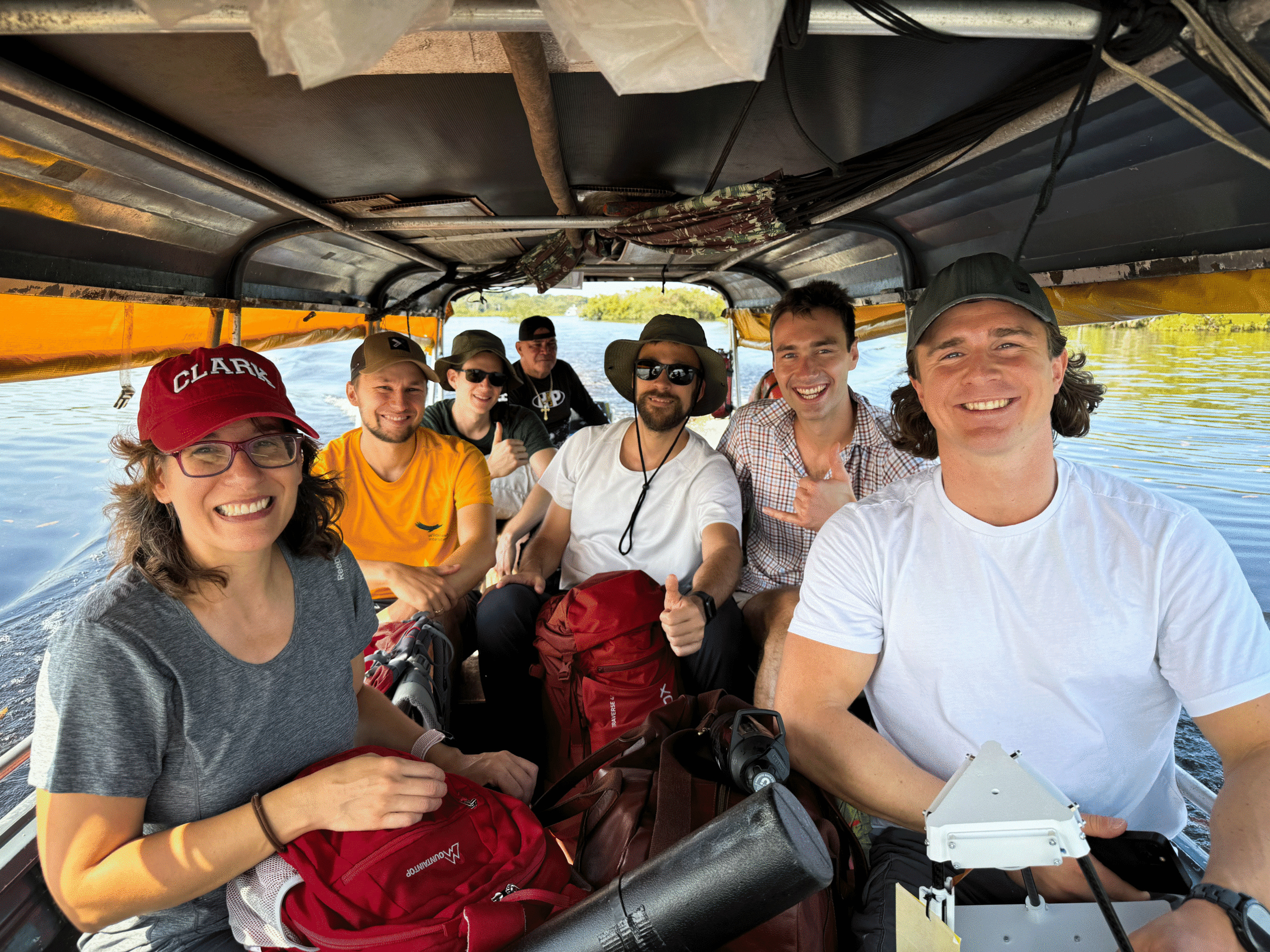
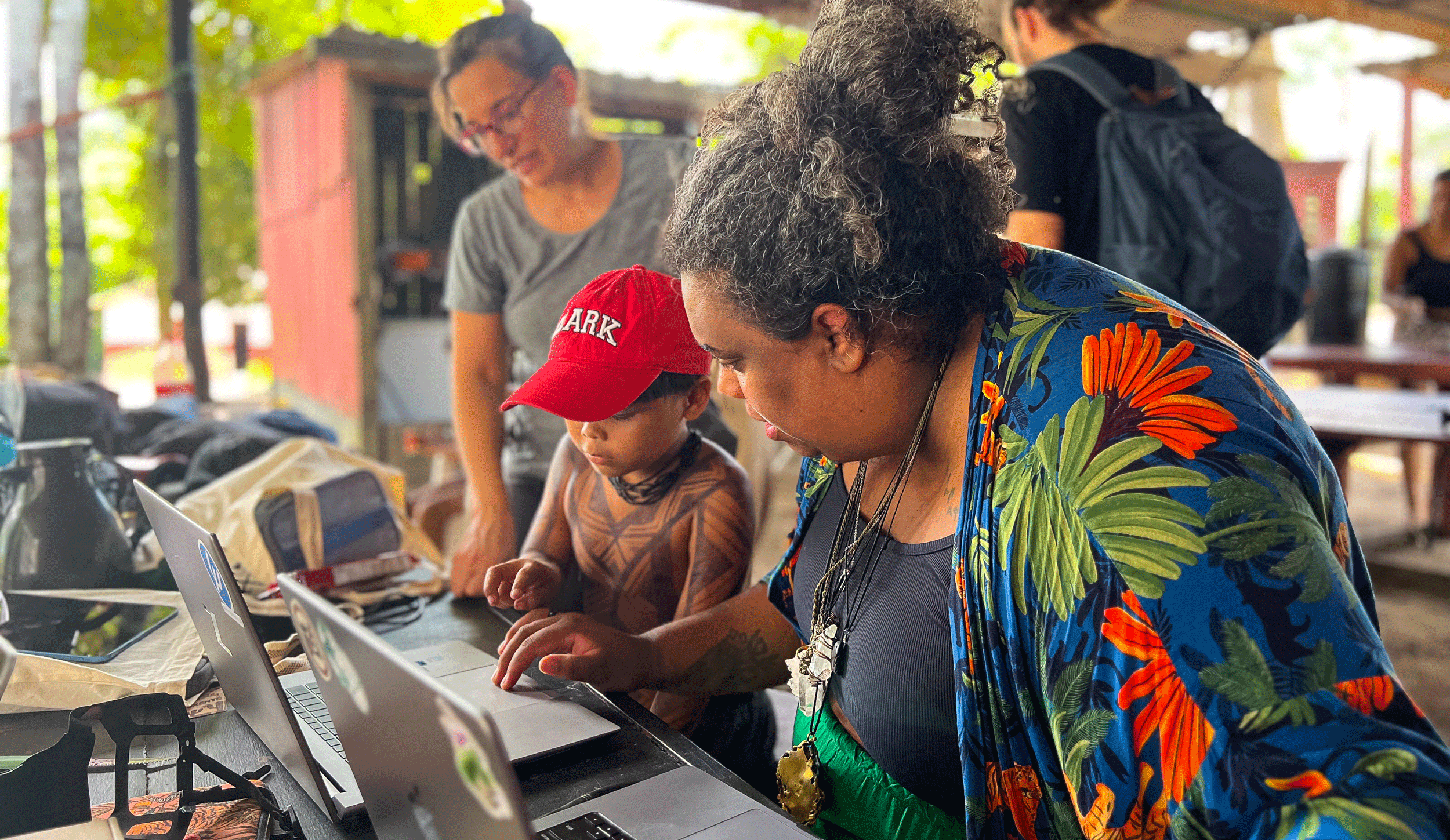
Working with Indigenous and local communities
Team ETH BiodivX worked closely with Indigenous and local communities, who shared their knowledge of animal and plant life, contributing an invaluable piece of the puzzle, according to Sangermano. Some of them joined the ETH BiodivX team and participated in the 72-hour quest in July.
“Our team was very diverse in terms of having knowledge from geographers, biologists, robotics, economists, artists, and traditional knowledge from the communities,” she said. “Each of us could contribute a little bit, making the information we could extract from the ecosystem much more comprehensive.”
Four days before the competition, the team took a boat ride to Inhaã-bé, an aldeia (village) they had previously visited.
“This village fills my heart,” Sangermano wrote in the diary she kept during the trip. “They were happy to host us again, and we were excited to show them the technology we were going to be using for the XPRIZE Rainforest finals.”
During the previous visit the team held a workshop at the village where the community provided feedback on the rafts.
“For example,” she added, “one member of the community mentioned that monkeys are very curious, and was concerned that the monkeys were going to pull on some of the exposed sensors.”
The team integrated community members’ recommendations, improving the designs for the final competition.
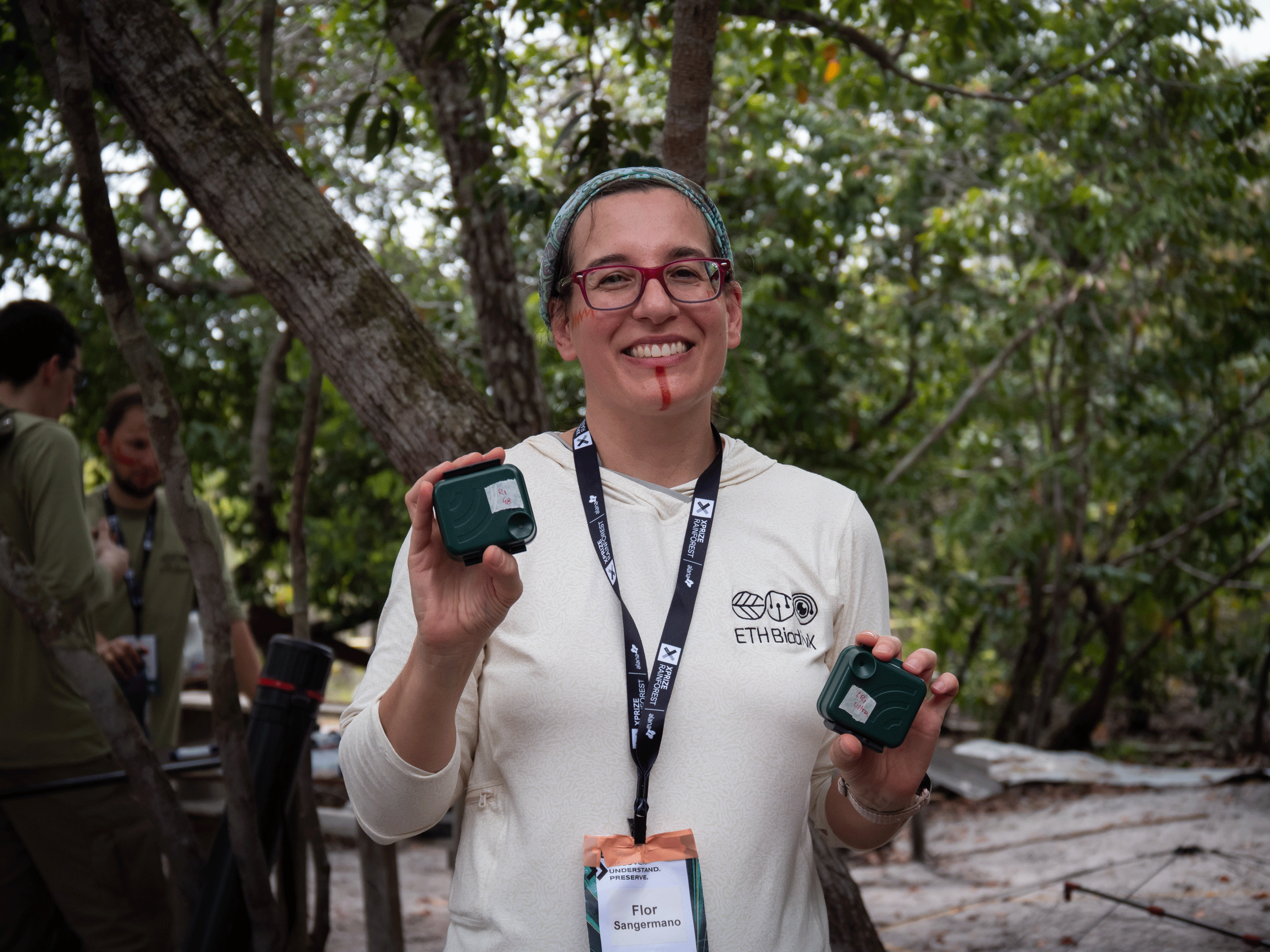
Besides the drones and rafts, the team’s equipment included acoustic recorders for capturing animal sounds; sticky traps to gather insects; a “backpack lab” to process e-DNA samples in the field; a Starlink kit for remote, satellite internet; computers; and a generator for electricity.
The research team partnered with Gainforest, a nonprofit organization that created an interactive platform to share technology with Indigenous communities, including results from the XPRIZE competition. In the village of Inhaã-bé, they demonstrated Taina, an AI platform developed by Gainforest to archive and share Indigenous knowledge.
Two members of the Inhaã-bé community painted team members with jenipapo, a South American fruit.
“This would give us protection during the competition,” Sangermano recorded in her diary. “My paint represented palm leaves that they use for construction. It represents resistance, strength, and knowledge.”
So that community members could continue to monitor the rainforest after the final competition, ETH BiodivX and Gainforest later would donate a drone, generator, and the Starlink to Inhaã-bé.
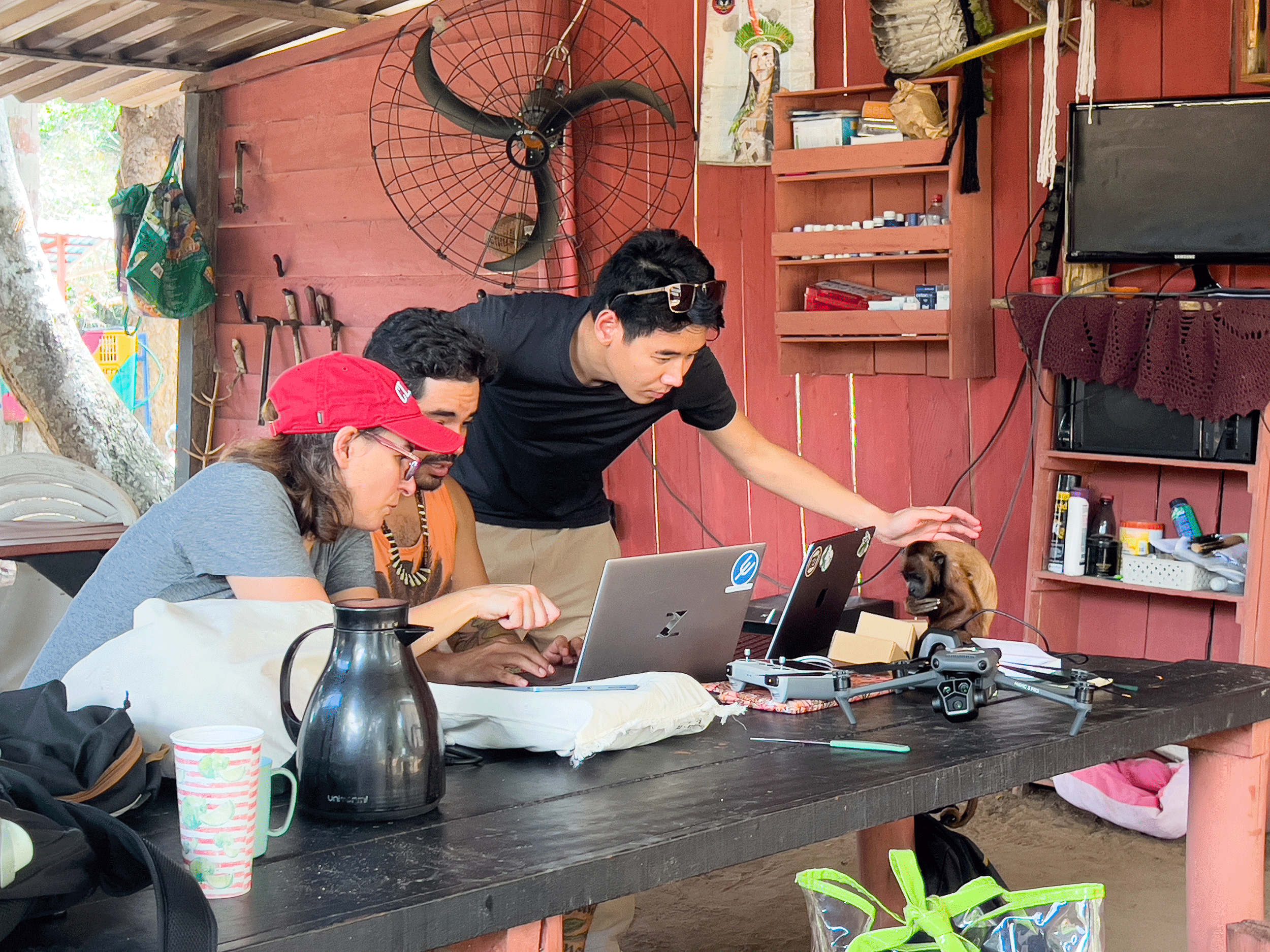
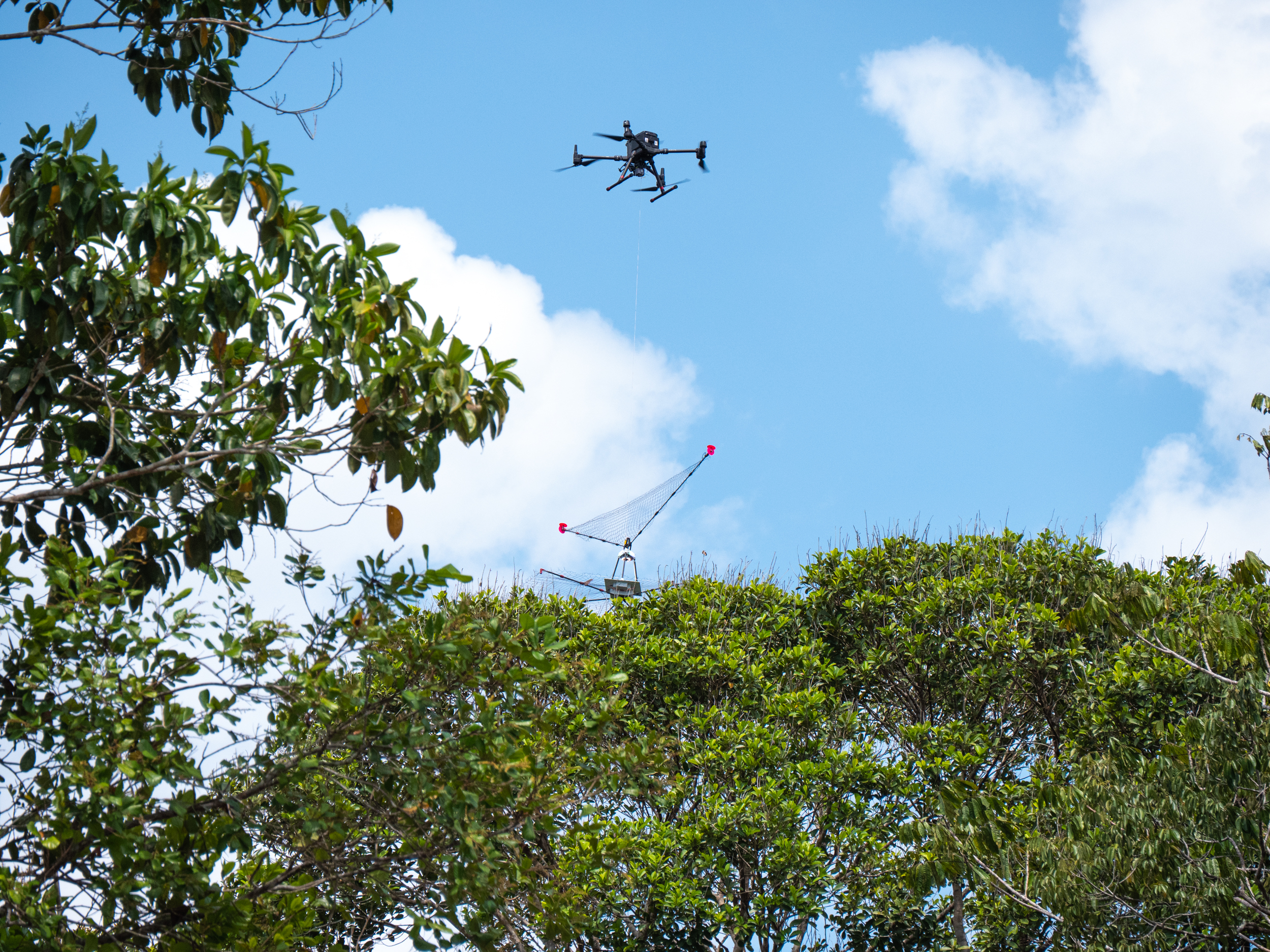
Deep in the Amazon
On July 9, ETH BiodivX left Manaus, a city of over 2 million people, for Toca do Tatu, a lodge on the Rio Negro, a tributary of the Amazon River. There, they continued to test their equipment and time the progression of their work.
“We deployed a complete raft, including sticky traps and recorders, and we left it overnight to collect test data,” Sangermano wrote. “It was very exciting to see it lifting off and moving toward the trees. We also timed how long each step took from deployment to analysis and practiced being efficient and avoiding contamination (especially during the collection of insects for DNA analysis).”
After an overnight rainstorm, she added in her diary, “we were thrilled when everything was functional! I then proceeded to get the recorders and assess them for species ID and soundscapes, as well as timing the process.”
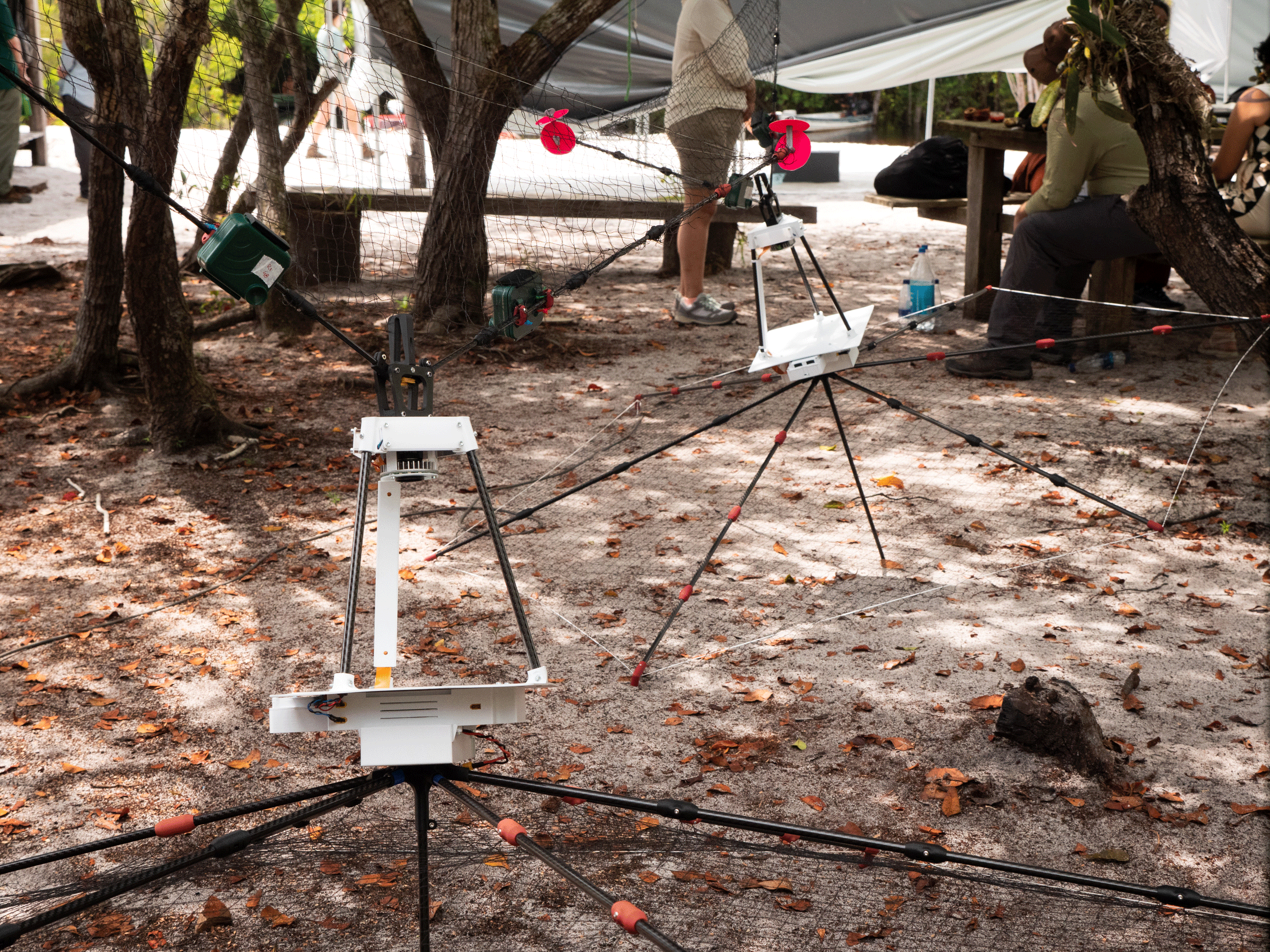
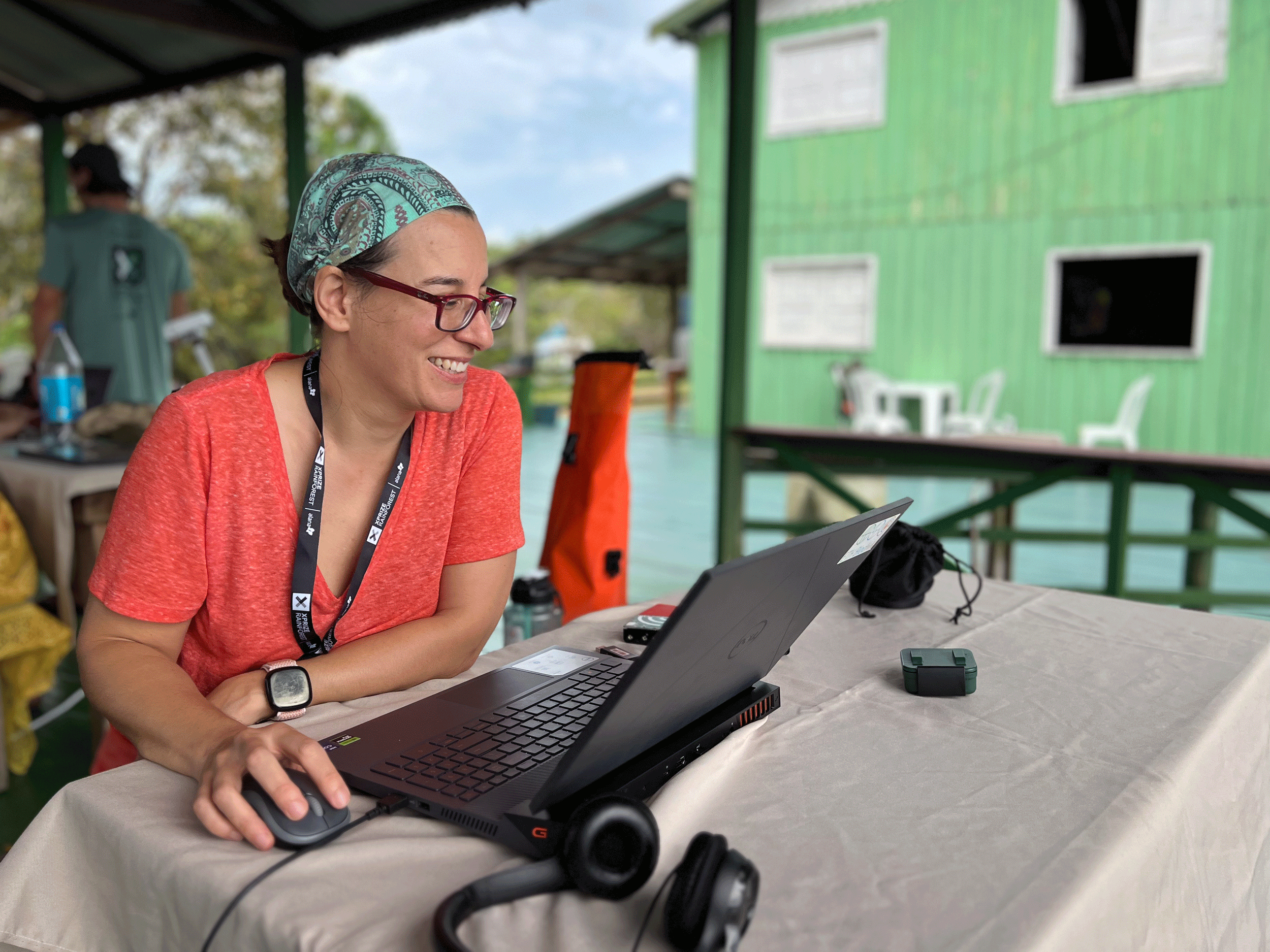
Team ETH BiodivX has relied on Sangermano’s expertise in geographical information science (GIS) and “ecoacoustics.” In the Amazon, she drew upon research she conducted in Massachusetts, where she attached recorders to trees to capture the sounds of birds, humans, and the weather. Coupled with remote sensing satellite data on forest cover and the changing landscape, Sangermano used sounds to track ecosystem diversity and health, research she was invited to present as a Kavli Frontiers of Science Fellow by the National Academy of Sciences.
On the day before the competition, XPRIZE officials provided the boundaries of the location that the team was going to sample.
“Seeing it on the map was a realization that we were very close to starting our 72 hours,” Sangermano wrote in her diary. “Feeling nervous and excited! Knowing this, we could target locations for the development of the rafts. … We decided on three areas [where] — based on remote sensing — we expected to see a larger number of species.”
The areas would be the best places for the drones to place the rafts, with recorders, atop the trees, according to Sangermano.
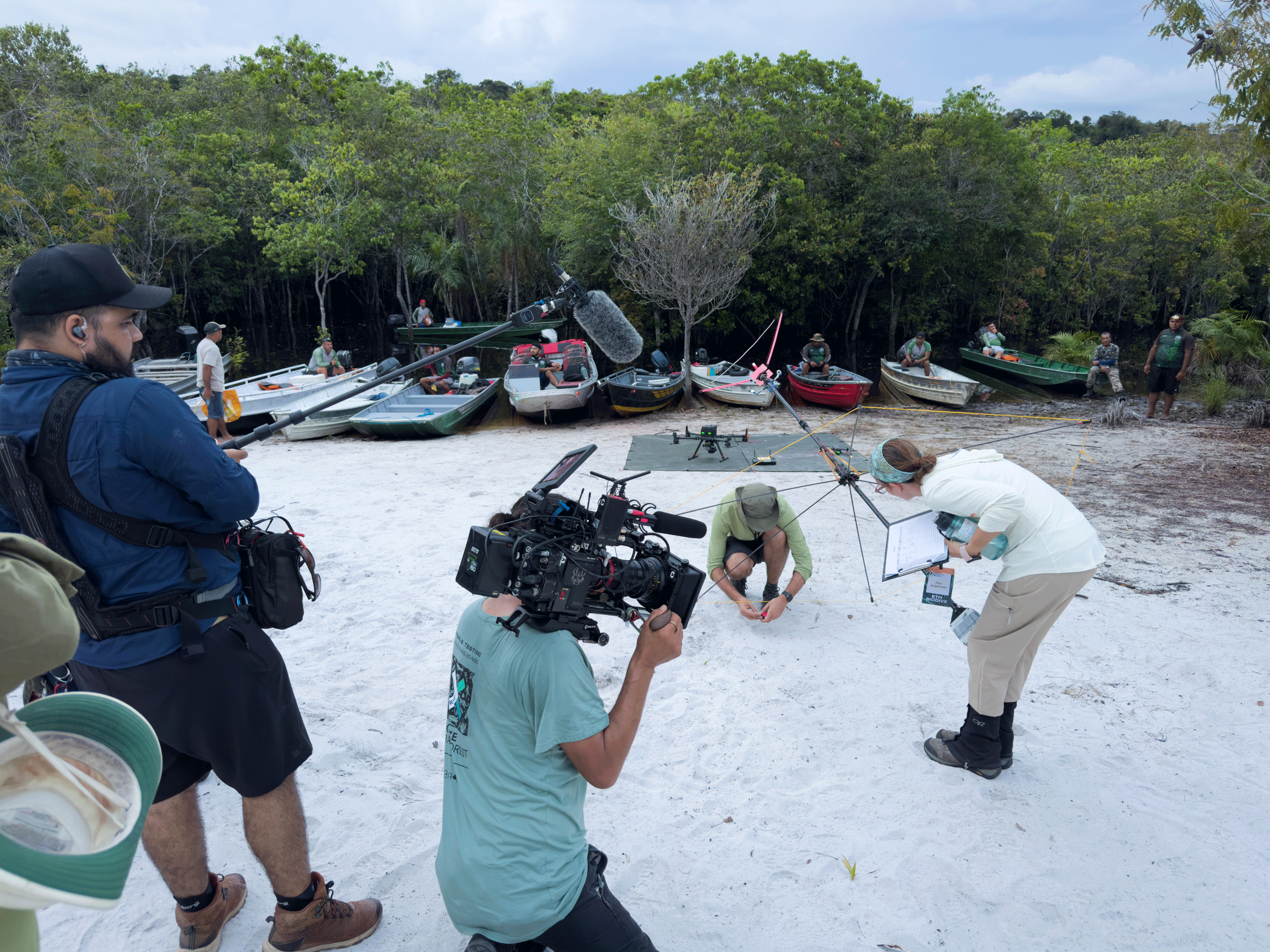
Ready, set, go!
In the early morning of July 11, the team took a half-hour speedboat ride from the lodge of Tumbira, where they would stay over the next three days. Sangermano and a smaller contingent of the team continued up the Tumbira river for another 45 minutes to the competition’s base camp, where an XPRIZE film crew and judges were waiting. The base camp was roped off with caution tape.
“We arrived at 10 at this little beach in the middle of the forest, and they had set up some tents. We had to have everything ready so that at noon, when the clock reset — they had a big clock counting down — we could start with the drone data collection” Sangermano later recalled in an interview.
With an eye on the clock, the scientists prepared a high-resolution map and images of the tree canopy elevation so they could “see the water through the canopy and target those locations for raft placement and eDNA water sampling,” she wrote in her diary.
The eDNA samples would provide additional clues about the animals living in the forest.
“Every living organism is shedding cells, and those cells contain DNA. Imagine swabbing the leaves of trees, and the swab contains all those cells,” Sangermano explained later in an interview. “Now you can extract all that DNA information and then separate out the species that were contributing to that DNA. And you can also do that with water.”
The team attached its flag atop a raft carrying the communications tower. “Seeing it flying on top of the canopy was amazing,” she wrote in her diary, “and everyone cheered!”
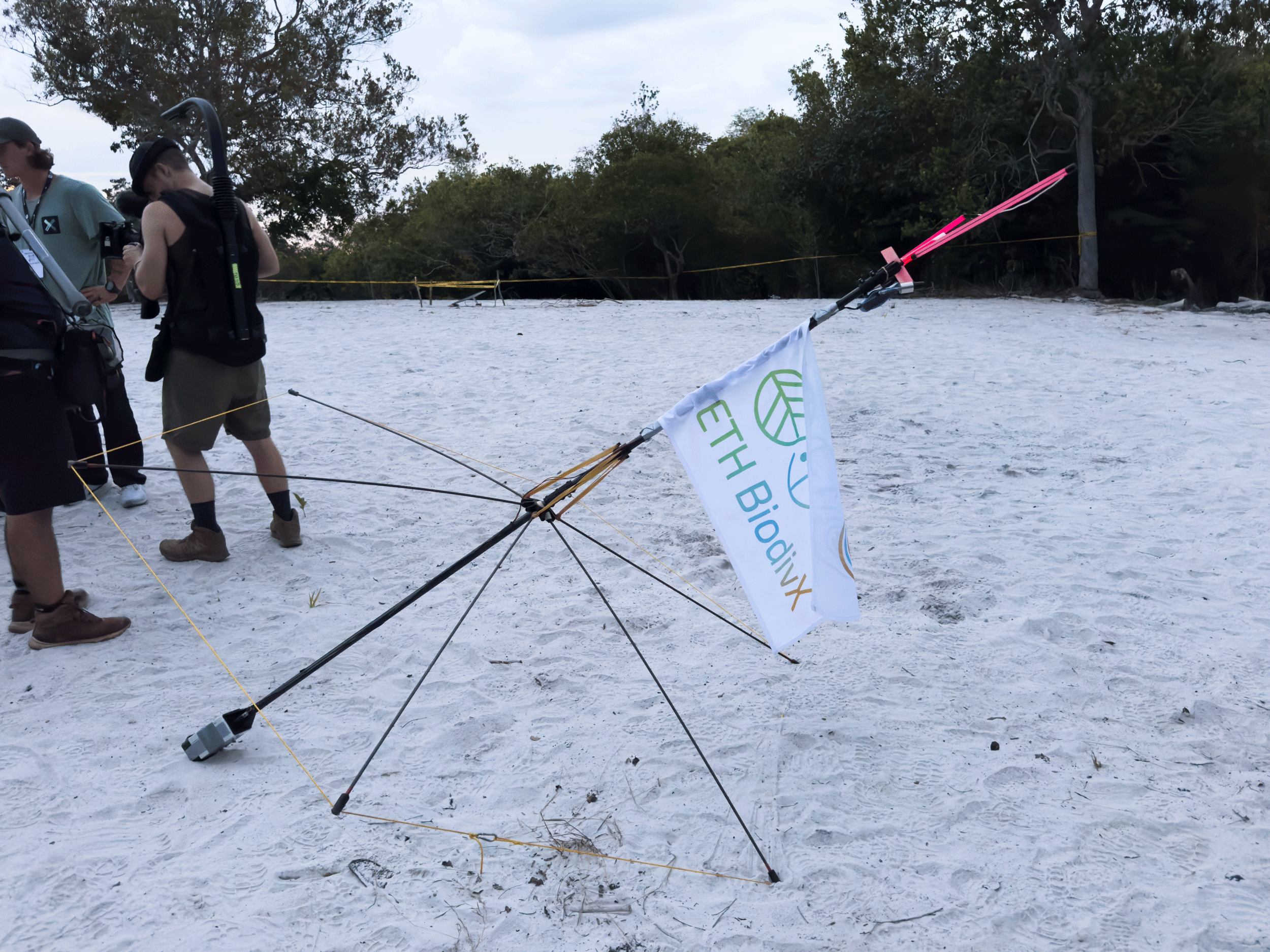
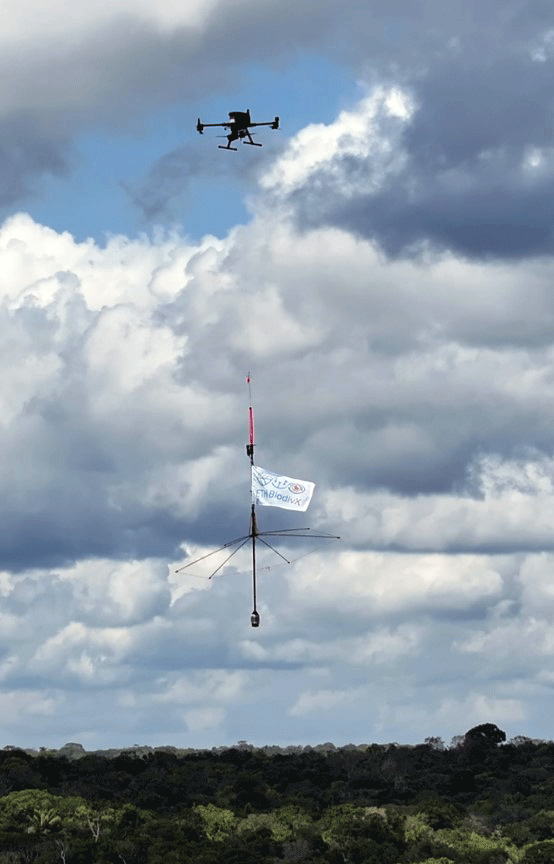
Nighttime boat rides
Finally, at 9 p.m., the team arrived back in Tumbira for four hours of sleep. Around 3 in the morning, they headed back to the beach.
“It was very dark, and the sky was full of stars,” Sangermano wrote. “We all gasped at the same time when a shooting star crossed the sky. It was breathtaking.”
With five hours to go until the end of sampling time, the team collected the rafts.
“When the first raft arrived, it was the moment of truth,” she wrote. “The sticky insect traps were saturated with insects, and several large moths were hanging in the raft netting. They even laid eggs on it!”
As Sangermano had suspected, the sounds of drones appeared in the recordings, but the scientists could still identify birds and bats. At night “the frogs and insects — especially cicadas — were very loud.”
The high humidity affected the drones’ radio signal, keeping the team from deploying rafts further into the forest. However, the scientists managed to collect 42 liters of water and 14 eDNA samples across the 100 hectares (38.6 square miles) of forest, in addition to the nine sticky traps full of insects and dozens of sounds from the rafts.
As noon approached, she wrote, “we gathered below the clock and did a celebratory countdown. We played our song and hugged and cheered with jambu — an Amazonian drink — to celebrate what we had accomplished so far.”
On the return boat ride, several scientists finished the last polymerase chain reaction (PCR) to rapidly produce copies of eDNA. As part of the 72-hour competition, they had performed 545 PCRs to produce 8.6 million DNA sequences.
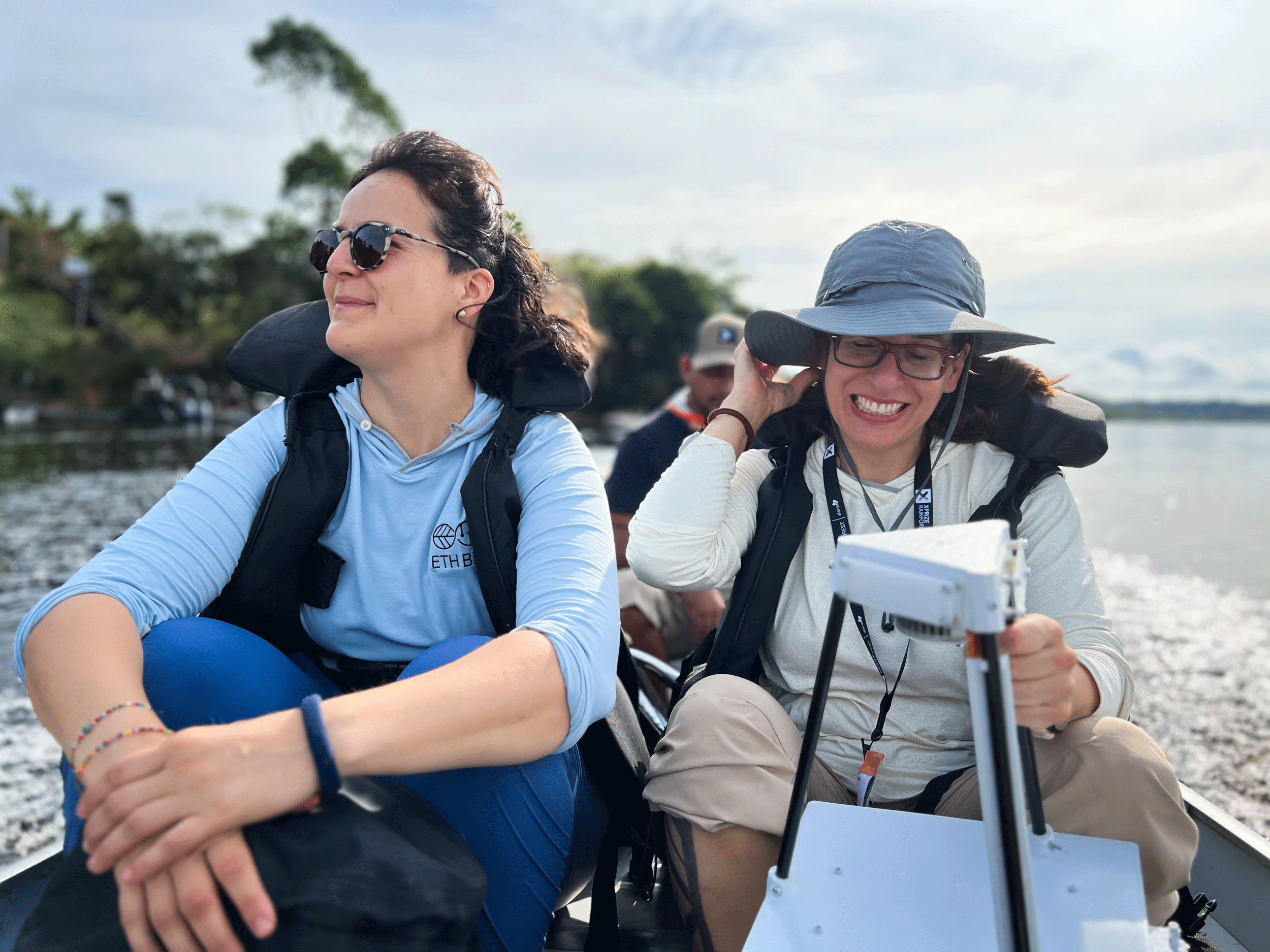
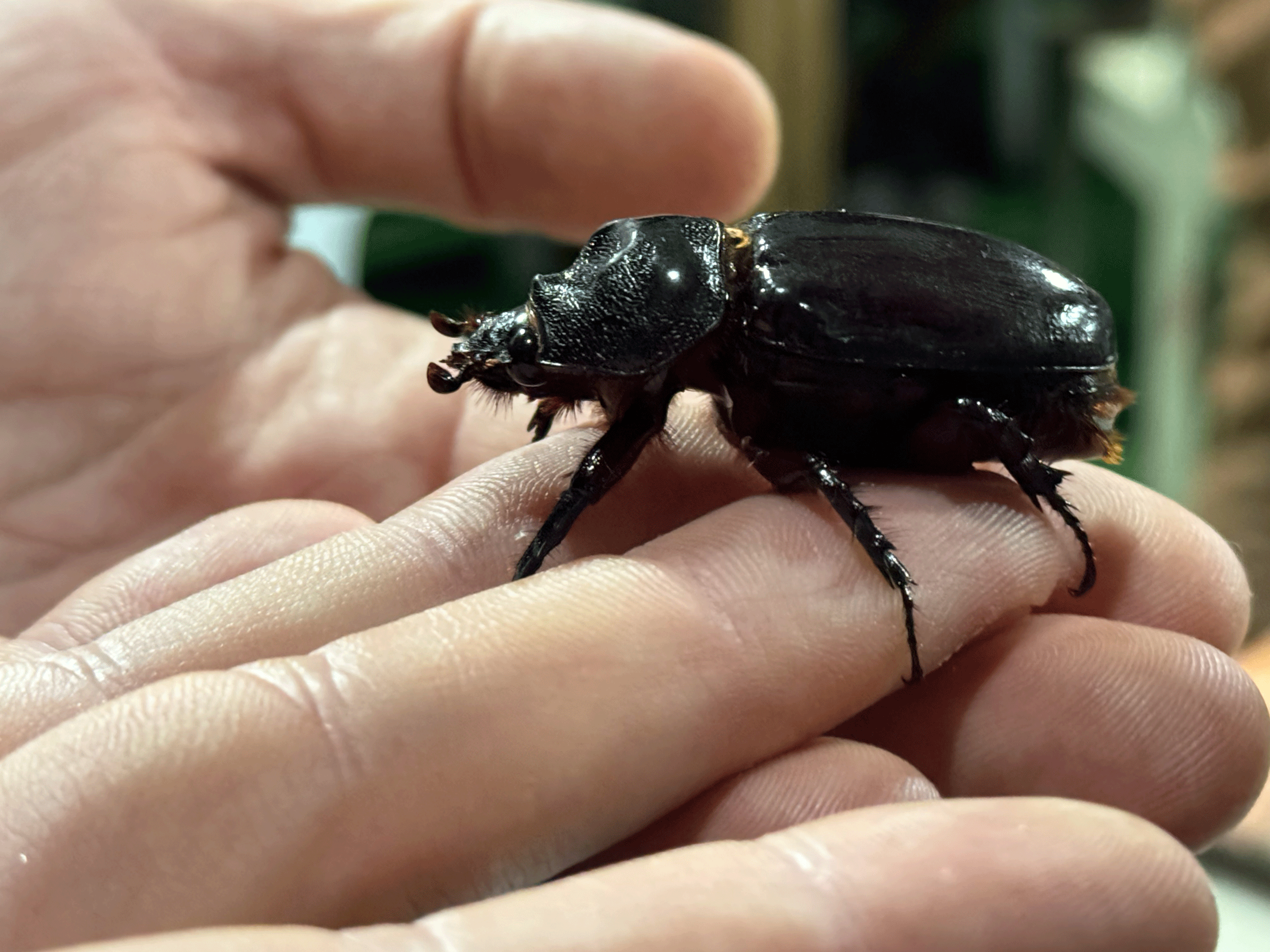
The next, and last, 48 hours
The next 48 hours were even more stressful for team ETH BiodivX, which used a “backpack lab” and AI to process and analyze the biodiversity data, according to Sangermano. Flying for 17-1/2 hours over more than 67 miles, the drones had captured images and mapped the area. The team used artificial intelligence to identify and count trees.
After working all day and night and getting just two hours of sleep, Sangermano woke up on July 13 to finish her analysis.
“Processing the data — at least the sounds — took much longer than expected, especially getting the taxonomy data and the files in the format required for the report,” she wrote in her diary.
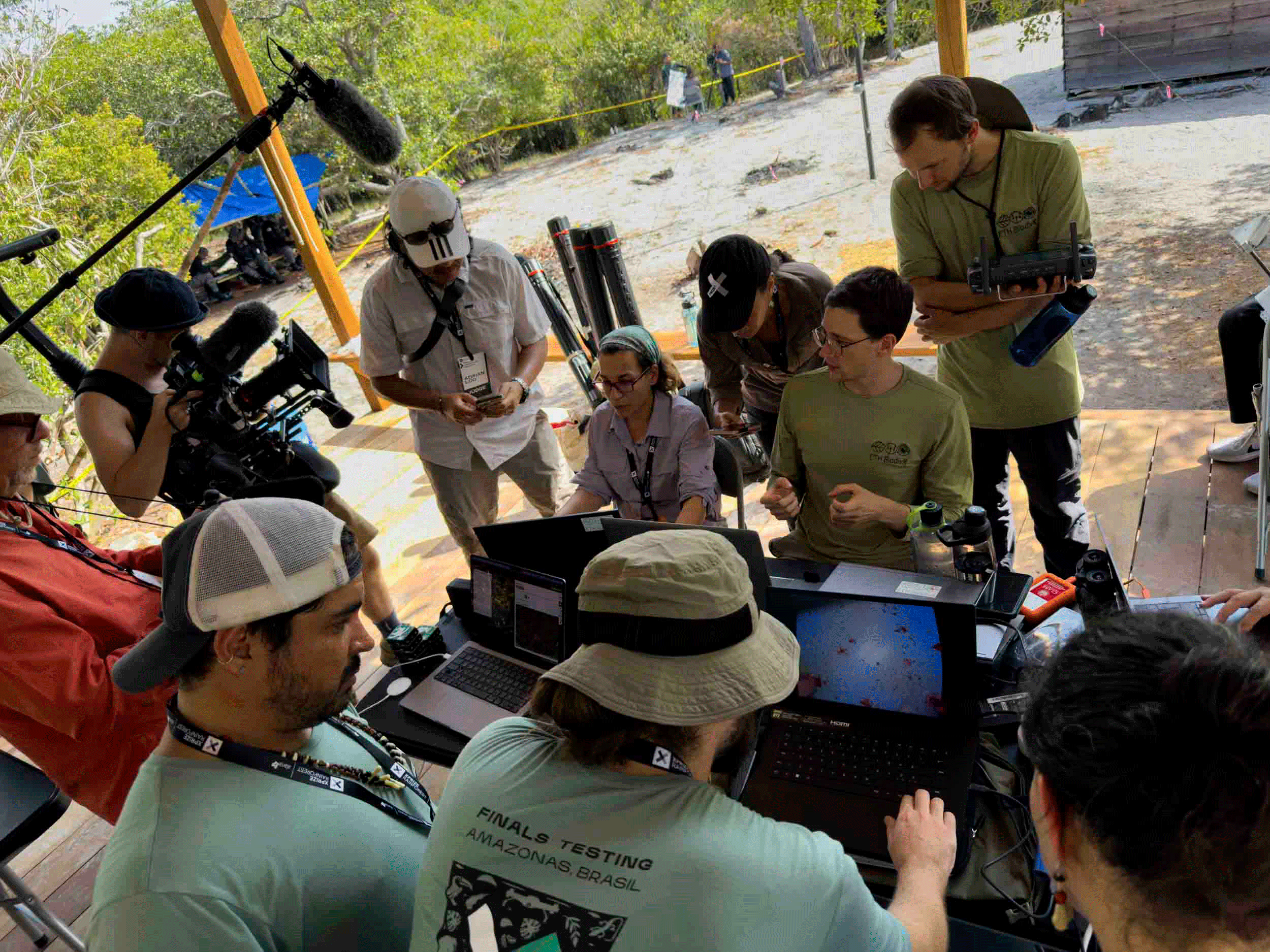
The team remotely transferred datasets to an ornithologist for assessment. “Unfortunately,” she added, “we did not have time to assess the quality of frogs and mammal detections, but bird detections were great.”
The team’s analysis continued overnight into the last morning, July 14, but “strong coffee helped!” Sangermano wrote.
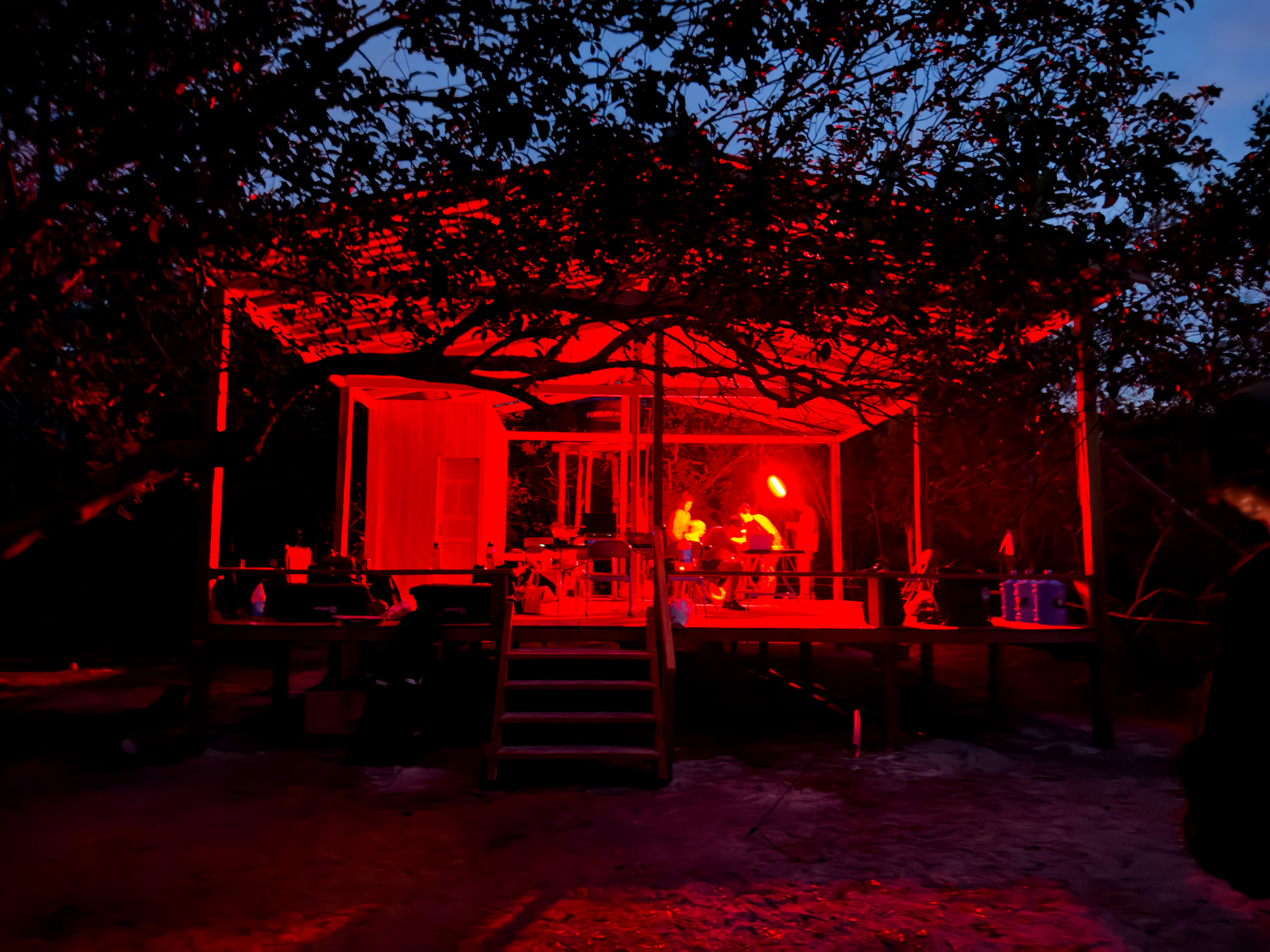
The clock counted down toward noon.
“Once the report was finished and submitted (with 1 minute to spare!),” she wrote, “the process left us a bit stressed.”
Lunch, however, “brought us back to ourselves, cheering and celebrating the wonderful journey,” Sangermano reported in her diary. “We identified 376 taxa [groups of organisms organized hierarchically, based on taxonomic rank] and wrote a 212-page report in only 72 hours!”
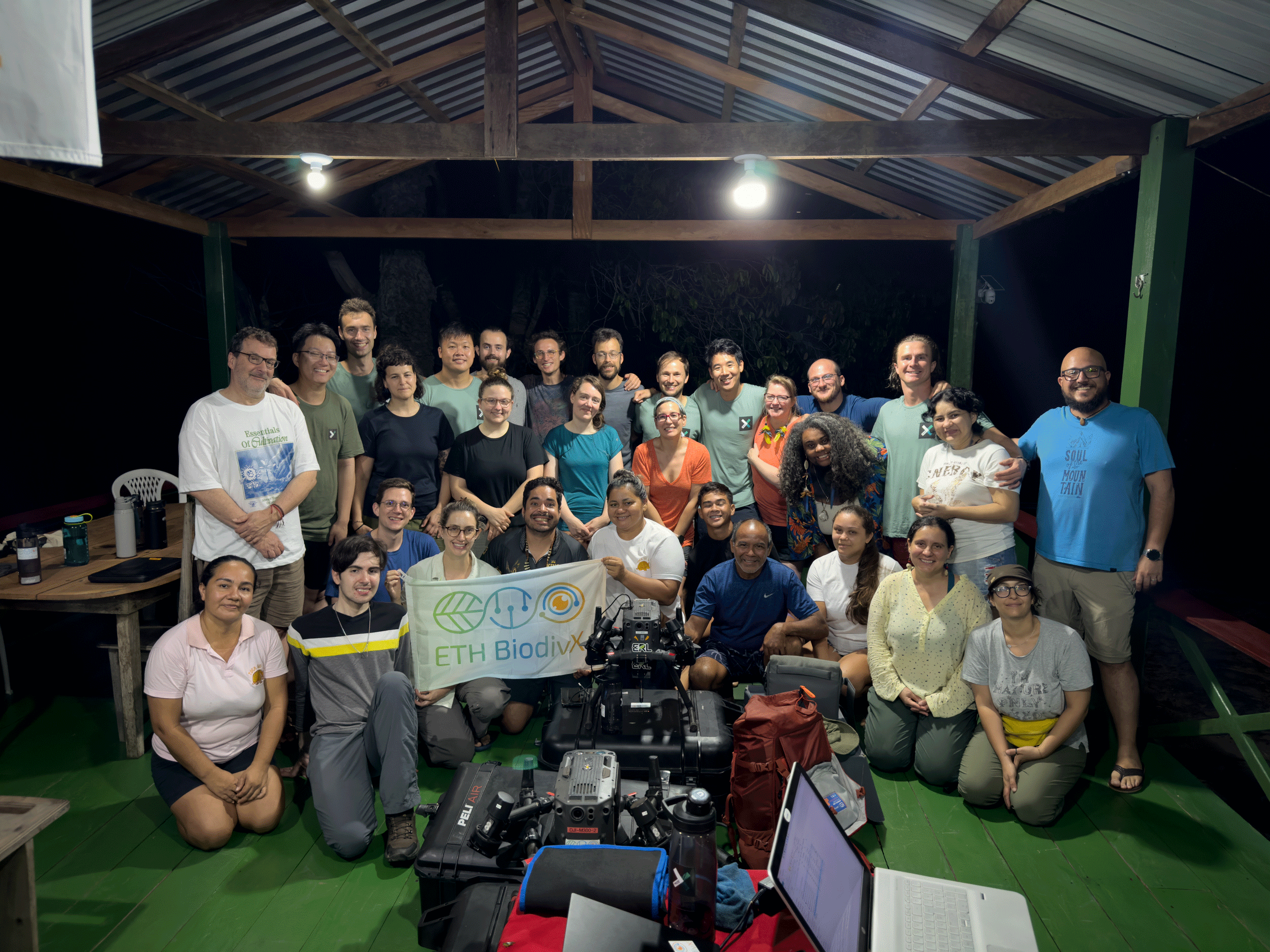
Unless otherwise indicated, photos throughout this story are courtesy of Veronica Condelo and Luca Desiderato.
Photo Gallery
Counting down the hours in the Amazon
